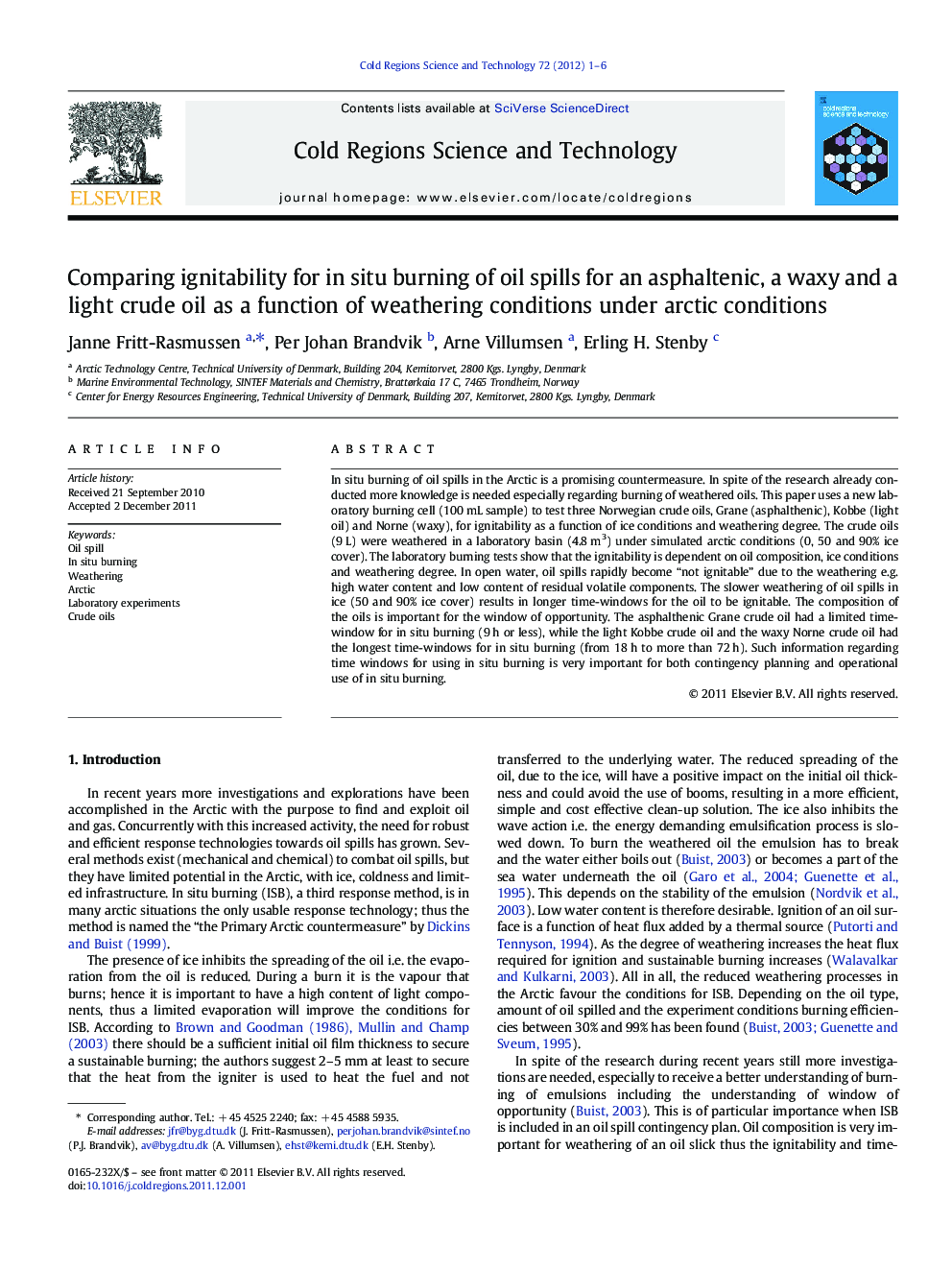| Article ID | Journal | Published Year | Pages | File Type |
|---|---|---|---|---|
| 4676033 | Cold Regions Science and Technology | 2012 | 6 Pages |
In situ burning of oil spills in the Arctic is a promising countermeasure. In spite of the research already conducted more knowledge is needed especially regarding burning of weathered oils. This paper uses a new laboratory burning cell (100 mL sample) to test three Norwegian crude oils, Grane (asphalthenic), Kobbe (light oil) and Norne (waxy), for ignitability as a function of ice conditions and weathering degree. The crude oils (9 L) were weathered in a laboratory basin (4.8 m3) under simulated arctic conditions (0, 50 and 90% ice cover). The laboratory burning tests show that the ignitability is dependent on oil composition, ice conditions and weathering degree. In open water, oil spills rapidly become “not ignitable” due to the weathering e.g. high water content and low content of residual volatile components. The slower weathering of oil spills in ice (50 and 90% ice cover) results in longer time-windows for the oil to be ignitable. The composition of the oils is important for the window of opportunity. The asphalthenic Grane crude oil had a limited time-window for in situ burning (9 h or less), while the light Kobbe crude oil and the waxy Norne crude oil had the longest time-windows for in situ burning (from 18 h to more than 72 h). Such information regarding time windows for using in situ burning is very important for both contingency planning and operational use of in situ burning.
►Oil sample ignitability as a function of weathering for three different oil types. ►Ignitability depends on oil composition and varies between the three oil types. ►Ice condition and weathering degree also have influence on the ignitability.
